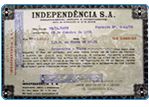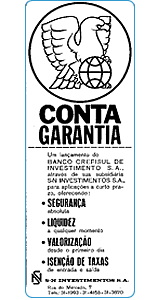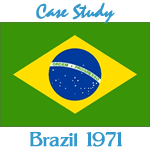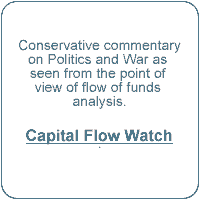 The First Money Market Fund: Conta Garantia
The First Money Market Fund: Conta Garantia
Historical Notes (Continued)
CRESCINCO and Conta Garantia
Conta Garantia : The first money market fund, created in the last half of 1968 and administered by S-N Investimentos S.A. for a quarter of a century.  The 'letra de câmbio' was popular in the early Brazilian market The 'letra de câmbio' was popular in the early Brazilian marketThis fund was invented by John Oswin Schroy as a vehicle to facilitate the sale of letras de câmbio (low denomination commercial paper certificates) to small investors. It was designed to solve a specific problem:
The idea of using a collective vehicle to sell commercial paper to small investors had been around in Brazil since the late 1950s, with the invention of the closed-end 'fundos de acceptance'. However, the Conta Garantia was a true money market fund, with modern features.  Advertisement for world's first money market fund. February 1969 Advertisement for world's first money market fund. February 1969
In the late 1960s, a spirit of innovation dominated the Brazilian capital market and it was easy to implement new capital market ideas. Conta Garantia was set up in one day and papers were drawn up by the firm's lawyer, Renato Gomes de Souza, so that the product could immediately be put on the market. There was no need to register with the SEC (there was no SEC) and start-up costs were nominal. As originally conceived, this fund was intended as a convenience to small clients of S-N Investimentos S.A.. However, the larger potential of the idea was soon apparent and John Schroy initiated an advertising program, including a three-story billboard next to the Rio de Janeiro Stock Exchange, direct mailings to 25,000 investors, and a TV commercial featuring an animated cartoon. This product soon attracted the attention of the powerful banking industry that recognized the competitive advantage of the money market fund concept. Within a few months, the bankers' association sent a delegation to John Schroy, suggesting that sales of the product be halted or at least that advertising cease. Their only argument was that they didn't like the competition. John Schroy refused and soon was invited to the office of Delfim Netto, the Minister of Finance, a Paulista with little affinity for stock brokers or the capital market, and a friend of the banking interests. The Minister ordered John Schroy to cease advertising Conta Garantia and prohibited sales other than over-the-counter at the company's office. This drastically restricted the expansion possibilities of Conta Garantia, but the fund continued on for a quarter of a century. Schroy sold his interest in S-N Investimentos in 1971. By the 1990s, Conta Garantia had grown to about US$ 200 million (equivalent) . Today there are hundreds of money market funds in Brazil.
|
CRESCINCO: Brazil's first major open-end equity mutual fund was founded in 1958 using syndicated assets left over from failed Interamericana underwritings. During the early 1960s, door-to-door sales of CRESCINCO quotas were the primary force driving stock prices on the Rio de Janeiro and São Paulo Stock Exchanges. A commissioned sales force with over one hundred agents were the basis for CRESCINCO's success. At one point in the early 1960s, the directors of CRESCINCO decided that, in order to save commission expense, they would no longer sell the fund through independent distributors. The distributors retaliated, putting signs in their windows say, 'CRESCINCO shares no longer redeemed'. This, of course, sent investors into a panic. There was a rush to redeem CRESCINCO shares that caused the stock market to fall sharply. CRESCINCO directors quickly recognized their mistake. Things were patched up with the distributors and the market recovered. The fund was administered by "Cia. Empreendimentos e Administração - IBEC" of the Rockefeller IBEC group (New York). In 1960, the executives of the CRESCINCO fund management company were: Theodore E. Seiler, Helmut W. Wreschner, Richard S. Aldrich, and Hans Jurgen Horch. Other equity funds in Brazil in 1960 were:
|

